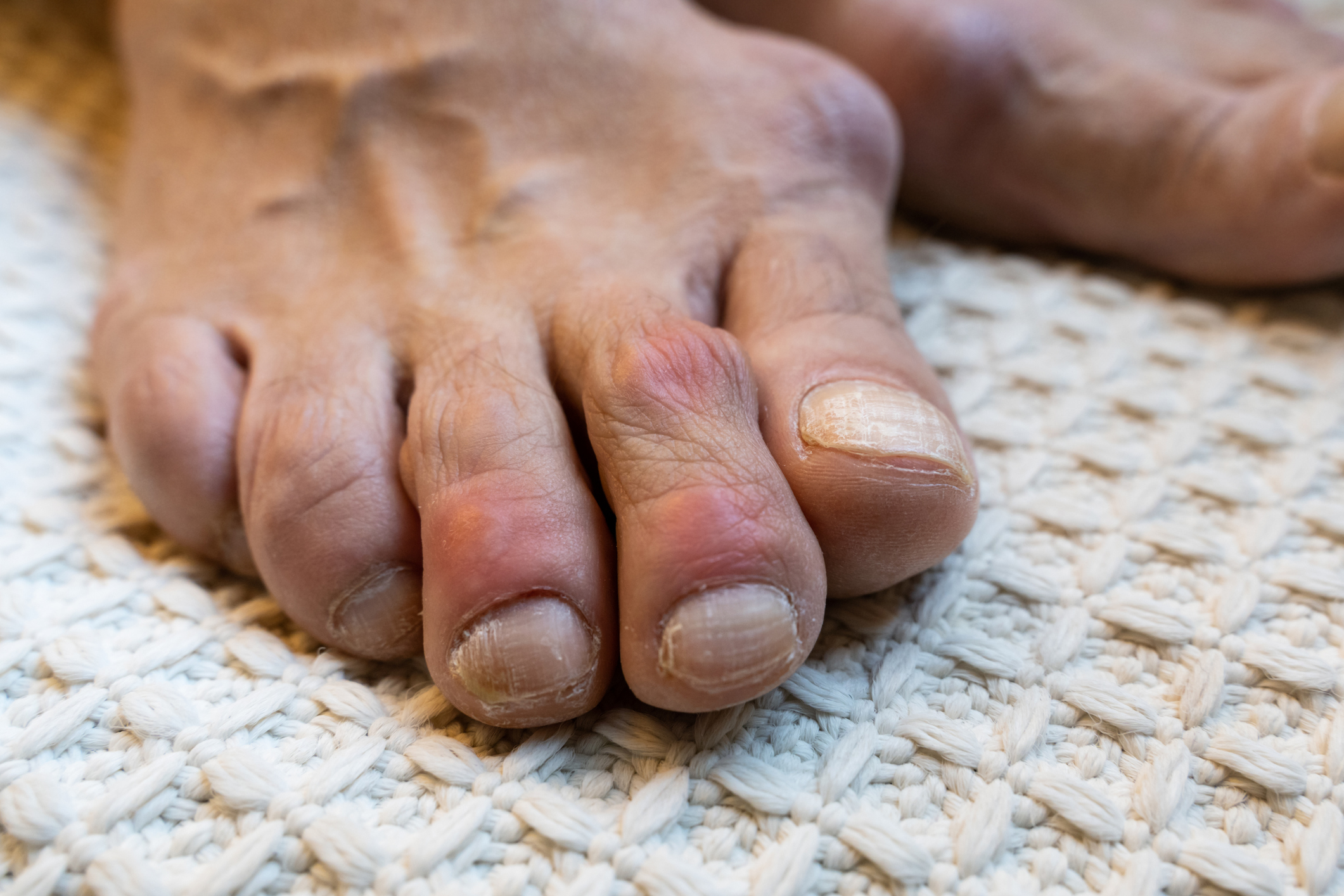
What does gout commonly affect?
Gout commonly affects the joints, particularly the joints of the lower extremities. The most frequently affected joint in gout is the base of the big toe, a condition known as podagra. However, gout can also affect other joints, including:
- Ankles: Gout can cause inflammation and pain in the ankles, leading to swelling, redness, and tenderness in the affected joint.
- Knees: The knees are commonly affected by gout, with symptoms such as joint pain, swelling, and stiffness.
- Feet: In addition to the base of the big toe, gout can also affect other parts of the foot, including the midfoot and heel. The arch of the foot and the joints of the midfoot may become inflamed and painful during gout attacks.
- Hands: Although less common than lower extremity involvement, gout can also affect the joints of the hands, including the fingers, thumbs, and wrists. Joint pain, swelling, and tenderness may occur in the affected hand joints.
- Elbows: Gout can cause inflammation and pain in the elbows, leading to symptoms such as joint swelling, redness, and tenderness.
- Wrists: Gout can affect the wrist joints, causing pain, swelling, and stiffness in the wrists.
Overall, gout primarily affects the joints, causing sudden and severe attacks of joint pain, swelling, redness, and tenderness. While the base of the big toe is the most commonly affected joint, gout can also involve other joints of the body, particularly those in the lower extremities such as the ankles, knees, and feet. If you experience symptoms of gout or have a history of gout attacks, consult with a healthcare professional for proper evaluation and treatment. Early diagnosis and appropriate management can help relieve symptoms, prevent recurrent attacks, and improve long-term outcomes for individuals with gout.
What patient with gout should avoid?
Patients with gout should avoid certain foods and beverages that can trigger gout attacks or exacerbate symptoms. These include:
- High-Purine Foods: Foods high in purines can increase uric acid levels in the blood, leading to gout attacks. Patients with gout should limit or avoid the following high-purine foods:
- Organ meats such as liver, kidneys, and sweetbreads
- Red meat such as beef, lamb, and pork
- Seafood such as anchovies, sardines, mackerel, herring, scallops, and trout
- Game meats such as venison and rabbit
- Processed meats such as bacon, sausage, and deli meats
- Certain Types of Alcohol: Alcohol consumption, especially beer and spirits, can increase uric acid levels in the blood and trigger gout attacks. Patients with gout should limit or avoid the following types of alcohol:
- Beer: Beer is particularly high in purines and has been strongly associated with an increased risk of gout attacks.
- Spirits: Spirits such as whiskey, vodka, rum, and gin can also increase uric acid levels and trigger gout attacks.
- Wine: Moderate consumption of wine, especially red wine, may be less likely to trigger gout attacks compared to beer and spirits. However, excessive wine consumption can still contribute to gout risk.
- Sugary Beverages: Sugary beverages such as soda, fruit juices, and energy drinks contain high amounts of fructose, which can increase uric acid levels in the blood and contribute to gout risk. Patients with gout should limit or avoid sugary beverages and opt for water or unsweetened drinks instead.
- Processed Foods: Processed foods high in refined sugars, saturated fats, and salt should be limited or avoided by patients with gout. These foods can contribute to weight gain, obesity, and metabolic disturbances, which increase the risk of gout attacks.
- Fried Foods: Fried foods such as french fries, fried chicken, and doughnuts are high in unhealthy fats and calories, which can contribute to weight gain and inflammation, exacerbating gout symptoms.
- Asparagus and Spinach: While most vegetables are low in purines and can be included in a gout-friendly diet, some patients with gout may be sensitive to certain high-purine vegetables such as asparagus and spinach. These vegetables should be consumed in moderation or avoided by individuals who experience gout attacks after consuming them.
It’s important for patients with gout to work with a healthcare professional or registered dietitian to develop a personalized diet plan that meets their nutritional needs while minimizing the risk of gout attacks. In addition to avoiding trigger foods, patients with gout should also focus on maintaining a healthy weight, staying hydrated, limiting alcohol consumption, and following a balanced diet rich in fruits, vegetables, whole grains, and lean protein sources.
